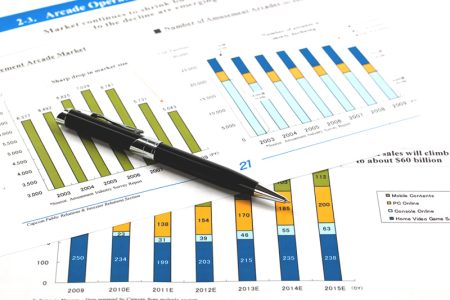By Lucia Mutikani
WASHINGTON (Reuters) – U.S. consumer prices barely rose in March as the cost of gasoline declined, but stubbornly high rents kept underlying inflation pressures simmering, likely ensuring that the Federal Reserve will raise interest rates again next month.
Nevertheless, the mixed report from the Labor Department on Wednesday offered some encouragement in the fight against inflation. Services inflation showed signs of moderating. Rents, though still high, rose at their slowest pace in nearly a year.
Food prices were unchanged, the weakest reading since November 2020, with households getting relief on some products at the supermarket.
“The bottom line is that inflation still remains too hot for the Fed’s liking,” said Sarah House, a senior economist at Wells Fargo (NYSE:) in Charlotte, North Carolina. “That said, there are forward-looking signs that suggest inflation will slow further in the coming months.”
The Consumer Price Index (CPI) climbed 0.1% last month after advancing 0.4% in February. A 4.6% decline in gasoline prices was offset by higher rental costs. Gasoline prices are set to rebound after Saudi Arabia and other OPEC+ oil producers early this month announced further oil output cuts.
The cost of food consumed at home fell 0.3%, the first decline since September 2020. Egg prices tumbled 10.9%. Meat, fruits and vegetables were also cheaper. But prices for cereals and bakery products as well as nonalcoholic beverages increased. It also cost more to eat out. In the 12 months through March, the CPI increased 5.0%, the smallest year-on-year gain since May 2021. The CPI rose 6.0% on a year-on-year basis in February.
The annual CPI peaked at 9.1% in June, which was the biggest increase since November 1981, and is subsiding as last year’s initial surge in energy prices following Russia’s invasion of Ukraine drops out of the calculation.
President Joe Biden said the sharp slowdown in the overall annual inflation rate meant “more breathing room for hard-working Americans.” Inflation by all measures remains more than double the Fed’s 2% target.
Economists polled by Reuters had forecast the CPI gaining 0.2% last month and advancing 5.2% year-on-year.
The inflation data came on the heels of last Friday’s employment report, which showed a solid pace of job growth in March and the unemployment rate falling back to 3.5%, but wage gains remaining moderate.
With an easing in financial market stress following last month’s collapse of two regional banks, economists expect the U.S. central bank to raise rates one more time in May before pausing its fastest monetary tightening campaign since the 1980s in June.
Financial markets are leaning toward the Fed increasing rates by another 25 basis points at its May 2-3 policy meeting, according to CME Group’s (NASDAQ:) FedWatch tool. Markets are even betting the central bank could start cutting rates this year as the economy slumps into a recession.
Stocks on Wall Street were mixed. The dollar fell against a basket of currencies. U.S. Treasury prices rose.
GRAPHIC: Inflation https://www.reuters.com/graphics/USA-STOCKS/zdvxdaxexvx/inflation.png
RELIEF COMING
The Fed last month raised its benchmark overnight interest rate by a quarter of a percentage point, but indicated it was on the verge of halting further rate increases in a nod to the financial market turmoil. It has hiked its policy rate by 475 basis points since last March from the near-zero level to the current 4.75%-5.00% range.
Excluding the volatile food and energy components, the CPI increased 0.4% last month after rising 0.5% in February. While sticky rents continued to drive the so-called core CPI, relief appears to be on the way.
Owners’ equivalent rent (OER), a measure of the amount homeowners would pay to rent or would earn from renting their property, rose 0.5%. That was the smallest gain since April 2022 and followed a 0.7% increase in February.
With independent measures showing rents on a downward trajectory, housing inflation is expected to continue subsiding this year. The rent measures in the CPI tend to lag the independent gauges. The slowdown in rent gains led economists at Goldman Sachs (NYSE:) to withdraw their forecast for a June rate hike.
“It points to strong disinflationary forces in the coming months as housing cost pressures ease significantly on the back of a sharp pullback in housing demand,” said Gregory Daco, chief economist at EY Parthenon in New York. “This slowdown may surprise many on the downside once it gets underway.”
The moderation in rent gains helped to restrain the pace of increase in the cost of services to 0.3% from 0.5% in February.
Airline fares increased 4.0% despite falling energy prices, which some economists said reflected higher wages and spring travel. The cost of hotel and motel accommodation also rose strongly.
Services excluding shelter were unchanged after edging up 0.1% in the prior month. Core services, which exclude energy, increased 0.4% after advancing 0.6% in February.
According to economists’ calculations, prices of core services outside housing climbed 0.4% after rising 0.5% in February. These prices are being monitored by policymakers to gauge their progress in taming inflation.
Core goods prices gained 0.2% after being unchanged in February. There were increases in the prices of apparel and new motor vehicles, but used cars and trucks maintained their downward trend.
In the 12 months through March, the core CPI gained 5.6% after rising 5.5% in February. That ended five straight months of slower increases in the year-on-year core CPI.
“We expect inflation to gradually cool but remain high through the rest of this year,” said Ryan Sweet, chief economist at Oxford Economics. “Therefore, the Fed is likely to keep rates elevated through the rest of this year, bucking market expectations for rate cuts.”
Read the full article here













